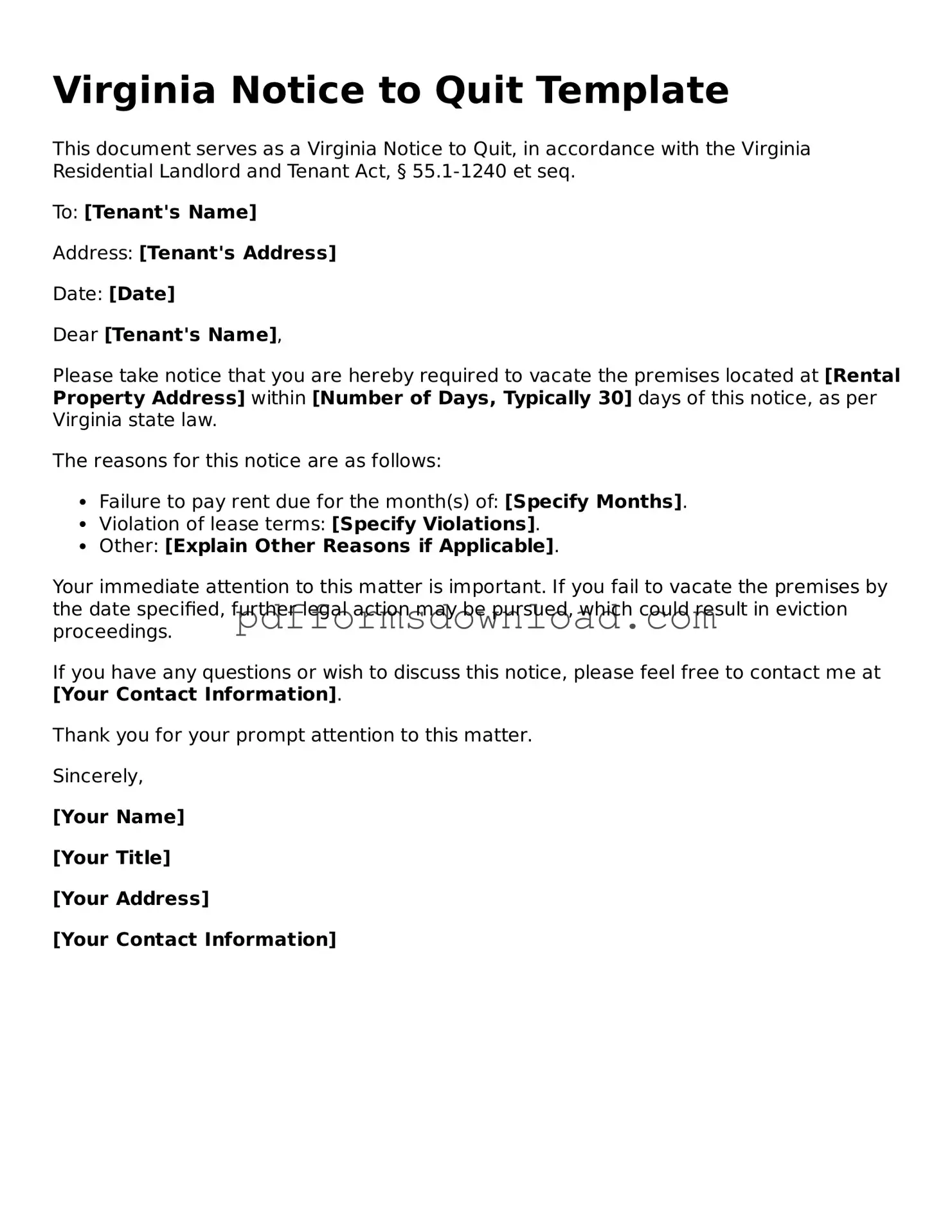What is a Virginia Notice to Quit form?
The Virginia Notice to Quit form is a legal document used by landlords to notify tenants that they must vacate the rental property. This notice is typically issued when a tenant has violated the terms of the lease or has not paid rent. It serves as a formal request for the tenant to leave the premises by a specified date.
When should a landlord use a Notice to Quit?
A landlord should use a Notice to Quit when a tenant fails to comply with lease terms, such as non-payment of rent or engaging in illegal activities on the property. It can also be used for lease violations that may not be related to payment, such as unauthorized pets or excessive noise. The notice gives the tenant a chance to correct the issue or prepare to move out.
How much notice must a landlord provide?
The amount of notice required can vary based on the reason for the eviction. For non-payment of rent, landlords typically must provide a five-day notice. For lease violations, a 30-day notice is usually required. It’s essential to check local laws for any specific requirements that may apply.
Can a tenant contest a Notice to Quit?
Yes, a tenant can contest a Notice to Quit. If a tenant believes the notice is unjust or the claims made by the landlord are incorrect, they can respond to the notice and may also choose to seek legal advice. If the situation escalates, the tenant may need to appear in court to defend against the eviction.
Is the Notice to Quit form required to be in writing?
Yes, the Notice to Quit must be in writing. A verbal notice is not sufficient. The written notice should clearly state the reason for the eviction, the date by which the tenant must vacate, and any other relevant details. This helps ensure clarity and provides a record of the notice.
What happens if a tenant does not leave after receiving a Notice to Quit?
If a tenant does not vacate the property by the specified date on the Notice to Quit, the landlord can proceed with legal action to evict the tenant. This typically involves filing an unlawful detainer action in court, where the landlord can seek a formal eviction order.
Can a tenant be evicted without a Notice to Quit?
Generally, a tenant cannot be evicted without a Notice to Quit. The notice is a legal requirement in Virginia, and skipping this step can lead to complications in the eviction process. It’s crucial for landlords to follow the proper legal procedures to avoid delays or potential legal issues.
Where can I find a Virginia Notice to Quit form?
You can find a Virginia Notice to Quit form through various online legal resources, local government websites, or legal aid organizations. It’s important to ensure that the form you use complies with Virginia law and includes all necessary information to be valid.
